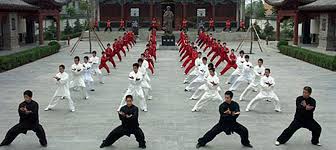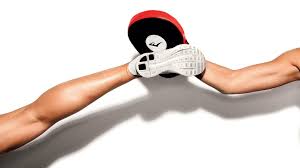French boxing – Savat
 French boxing – Savat. Savat – this box is of French origin, it uses both arms and legs in the same way, elements of western boxing are used in combination with kicks. The rules of wrestling allow only kicks, unlike other martial arts, in which kicks and knees are allowed. Savat is a unique style in which opponents wear boots.
French boxing – Savat. Savat – this box is of French origin, it uses both arms and legs in the same way, elements of western boxing are used in combination with kicks. The rules of wrestling allow only kicks, unlike other martial arts, in which kicks and knees are allowed. Savat is a unique style in which opponents wear boots.
Savat was created on the basis of two French schools that studied kicking. One school was in Paris, the other in the south of France, not far from Marseille. Her first name was “Marseille surprise”, due to the style features for any fighter. However, the most famous name of the style was “Chausson.” It was used by soldiers and sailors as entertainment during long voyages on ships of that time.
The Savat school of Riga was considered the most cruel. “Savat” is translated as “fight in slippers”, or “worn shoe”, and the slang version of the translation of this word is a tramp, a tramp. It was among them that the techniques of the Parisian version of Savat were improved and transmitted, which explained their cruelty and effectiveness.
In 1830, the famous fighter Charles Lekur, who was engaged in boxing and fencing in addition to savat, decided to open his own school, as he did not like the reputation of this fight as brutal and brutal, applicable to street fights.
He taught savatas to representatives of the bourgeoisie and people of free professions: doctors, lawyers, artists. Lekur removed from his school the most dangerous tricks to make a sports fight out of savat, in addition, he combined punches from boxing and kicks from savat in one technique.
In 1832, the unification of both species into a new discipline was successfully completed. Lekur began to teach a new sport called “French boxing.” A special code of honor and rules was created. Lekur informed the general public of the main tricks.
The writer of that time, Theophilus Gauthier, who was also a student of Lekur, wrote that the savat, which for a long time was an unfair struggle of vagabonds, was miraculously transformed by Charles Lekur into real art.
Among the students of Lekur there were many celebrities of that time, such as Baron de Laroshfuko, Alexander Dumas.
Boxing Savat However, the real founder of French boxing is rightfully considered to be Joseph Pierre Charlemont, who not only was the most outstanding specialist of his time in this sport, but also published a whole system that determined the essence of French boxing for more than sixty years.
The era of Charlemont began in 1862, when Charlemont Sr. went on a successful tour of Europe, and its end is considered to be 1924, when students of Charlemont Jr. showed French boxing as a national sport at the Olympic Games.
Now the French Boxing Federation includes 59 countries, including Russia.
Savat Competition Rules (French Boxing)
In Savat, there are 2 sections of the competition:
“Asso” – easy contact – this is a section in which you can not inflict strong blows with your hands and feet, it is important the quality and accuracy of the technique.
“Comba” – full contact – a section in which strong limbs are allowed.
Depending on the level of training of athletes, they distinguish between “Pre – combo” when protection is required and “Comba” when the use of protection is prohibited.
Competitions are divided into team, personal, personal-team. Competitions are held in several stages of 2 minutes, depending on the section and stage of the tournament.
All athletes must go to a duel in a clean sleeveless overalls, which must fully comply with the rules, and also use protection in the form of gloves, bandages, special protective equipment. Before the fight, the savatista bandage their hands with elastic bandages, which are marked by the judge before the fight. Special remedies include protection for teeth, groin, chest – for women. Before the fight, all defense is checked, in case of violations in equipment, the athlete is disqualified.
They judge fights on the basis of assessing the quality of equipment and combat, the effectiveness of combat. In each round, athletes are awarded points according to a certain system, and a draw is possible only in one of the rounds.




